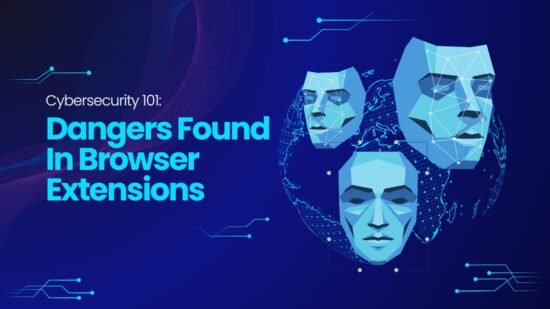Encrypted Customer Password Vaults Compromised During Recent LastPass Hack
Key Points
- A password manager is a powerful security tool that stores all your usernames and passwords in one place.
- The best password managers can also monitor websites for data breaches and alert you if any of your accounts have been compromised.
- In August 2022, news broke that hackers had breached the servers of LastPass, a popular password management service.
- Since then, LastPass has issued multiple updates to notify customers of the incident, with the most recent announcement coming just before Christmas.
A password manager is a powerful tool that adds an extra layer of security to your online accounts. With it, you can store all your usernames and passwords in one secure place, so you don’t have to remember multiple passwords for different accounts. It also allows you to use strong, complex passwords for each account, which makes it harder for hackers to guess your passwords.
The best password managers can also monitor websites for data breaches and alert you if any of your accounts have been compromised. By using a password manager, you can ensure that your online accounts are safe and secure. If you pay for a service that can help manage all your sensitive login and password details, the number one priority must be keeping your information safe from the vast and often dangerous online world.
Customers were rightly worried when LastPass, one of these services, announced in August that its cloud servers had been breached, allowing a hacker to access an employee account. In early December, further news came out stating that the hacker could access customer data. The company failed to mention that the truth of the situation was far worse than they had initially admitted.
What’s the Backstory of the LastPass Hack?
In August 2022, news broke that hackers had breached the servers of LastPass, a popular password management service. Customers were understandably concerned about their data security given this news. Since then, LastPass has issued multiple updates to notify customers of the incident, with the most recent announcement coming just before Christmas. Unfortunately, these updates revealed that the hacker had access to more customer data than initially thought.
When many were likely preoccupied with thoughts of festivities and cheer, the password management service LastPass revealed that hackers had maliciously accessed their customers’ password vaults. This was an uncomfortable reminder of the security threats facing us online and how important it is to take the necessary steps to protect our data.
The Truth Behind the LastPass Hack
In a blog post, CEO Karim Toubba noted that an unknown intruder had gained access to and copied the cloud-based vault containing encrypted passwords, usernames, and form-filled data. Despite the severity of this incident, Toubba reassured customers that the encrypted fields remain protected by 256-bit AES encryption. He said that only the user’s master password could unlock these fields using LastPass’ zero-knowledge architecture and emphasized that this master key is never stored or managed by the company.
The circumstances of this breach suggest that LastPass failed to contain the incident, causing a prolonged impact on customers. When first disclosing the breach in late November, Toubba only alluded to “certain elements” of compromised user information; only three weeks later did he provide the full extent of exposed data. This serves as a stark reminder of the importance of cybersecurity and the need for companies to be transparent with their customers. It also underscores the necessity of using a reliable password manager in today’s digital world.
It is vital to take action to ensure your data remains secure. You should consider changing your passwords to log into sensitive accounts, such as your banking, credit card, medical records, and email accounts. Taking this action can help safeguard your data from potential misuse. It is also wise to update your passwords regularly to ensure the highest level of security. Doing so could differentiate between a secure and insecure digital life.
If LastPass’s default master key password parameters are adhered to, such as a 12-character minimum, Toubba assured there is no need to take further action. He explained that, with the help of these defaults, guessing a master password with current technology would be an almost impossible feat, taking millions of years. However, malicious actors may still attempt to gain access through brute force attacks, phishing attacks, or credential stuffing.
How Malicious Actors Capitalize on Vulnerabilities
Any data breach presents an opportunity for malicious actors to capitalize on vulnerabilities. Personal information, such as email addresses and passwords, can be used for identity theft. If a hacker can access an account, they can also access any associated financial accounts. Even if the stolen information is encrypted, malicious actors can use it in attempts to crack the encryption code.
Brute force and phishing attacks are two of the most common methods hackers use to gain access to passwords. A brute force attack breaks into an account by repeatedly entering different combinations of characters until the correct code is found. Meanwhile, phishing scams are attempts to steal user information by tricking a person into clicking on malicious links.
Credential stuffing is another malicious method used to gain access to user accounts. This attack involves the automated use of previously stolen credentials, such as usernames and passwords, to gain access to other user accounts. Credential stuffing is often combined with automated scripts to increase the chances of success.
Here are just a few ways these attacks can compromise data:
- Hackers can use stolen passwords to gain access to other accounts.
- The compromised data can be used to launch malware attacks.
- Malicious actors can use the data for financial gain.
- The hacker can use the data to access sensitive documents, such as tax records.
- The hacker can launch a denial of service attack and take down a website.
Anyone can fall prey to today’s digital traps, so we must remain vigilant to protect ourselves and our data. The internet is a powerful tool but can be dangerous when used carelessly or without the proper precautions. By being aware of potential threats and taking steps to safeguard against them, we can ensure that our digital lives remain safe and secure. As we continue to build an ever-expanding digital world, it is our responsibility to protect ourselves from the possible dangers that come along with it. It is also the responsibility of businesses, governments, and other organizations to ensure the safety of their users by implementing strong security measures.
The Bottom Line
The LastPass attack was not a one-time event in August. Instead, a series of breaches are built upon each other to give the attacker access to customer data. It is unclear how they initially gained access to the developer environment, but it could have been through phishing, which resulted in the installation of malicious software. From there, they could get access and decryption keys for the cloud environment, allowing them to download customer data.
Given the relative ease with which attackers can access user accounts, it’s essential to know how malicious actors are taking advantage of this vulnerability. These malicious actors may use stolen account credentials to access sensitive information, such as financial records or personal data. They may also engage in more nefarious activities, such as using stolen accounts to launch phishing campaigns or spreading malware.
Given the complexity of modern cyberattacks, businesses must stay ahead of the curve with comprehensive security measures. Organizations should invest heavily in a reliable cybersecurity infrastructure, from setting up firewalls and malware protection to utilizing multi-factor authentication and data encryption. Furthermore, businesses should regularly review and update their security policies to ensure they can quickly respond to changing threats.
By taking a proactive approach, organizations can protect their business from the devastating impacts of a successful cyberattack. Ultimately, a robust cybersecurity strategy is the foundation of any secure enterprise.
Thanks to our great friend, Kenny Riley, with Velocity IT in Dallas, for helping us with this research.



